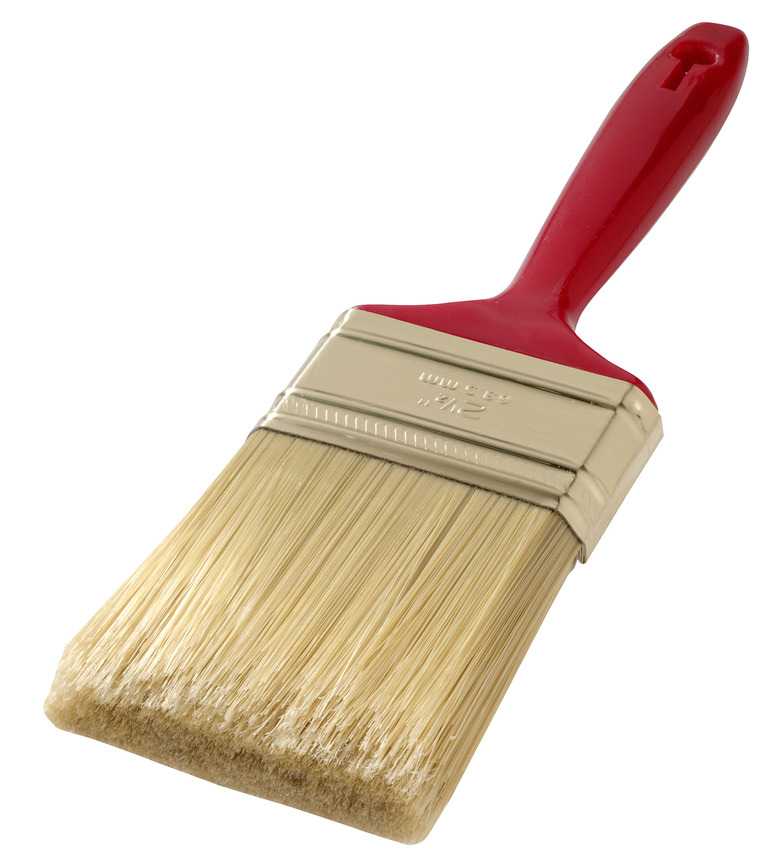How To Prepare To Repaint Cedar Siding
Things Needed
-
High-pressure nozzle
-
Water hose
-
Wood cleaner
-
5-gallon plastic bucket
-
Paint brush or roller
-
Roller extension pole
-
Nylon scrub brush
-
Sandpaper, 120-grit
-
Paint scraper
Your freshly painted cedar siding looked so good after it was completed; but over time the elements have taken their toll and the finish is starting to look weathered. Certain areas are peeling and lifting, and the color has faded. The key to a successful application of paint is surface preparation. By following a few simple steps you can prepare your siding for repainting and have your house's cedar siding looking new again.
Preparing Cedar Siding for Repainting
Step 1
Rinse the siding with a high-pressure nozzle attached to a water hose. Wash away any cobwebs and surface dirt; don't worry about getting it immaculate. Wet down all the wood to which you will apply wood cleaner.
Step 2
Mix the wood cleaner, which is usually sold in concentrated form, according to the manufacturer's instructions to create a full-strength solution in the 5-gallon bucket.
Step 3
Apply the wood cleaner to the cedar siding using a paint brush or roller. Reach the high areas or apply cleaner to the less-dirty areas using a roller with an extension pole, which doesn't allow you to apply as much pressure or elbow grease as a paint brush.
Step 4
Let the cleaner sit on the cedar siding for 15 to 30 minutes. The full-strength solution should be strong enough to break down and remove failing coatings from the siding. Check the cleaner every 15 minutes. Leave it on longer than 30 minutes if needed. Keep the cleaner wet to ensure its effectiveness. Mist it with water if the cleaner starts to dry.
Step 5
Scrub down the siding with a nylon brush once the cleaner has loosened the failed coatings. Use the brush to further break down and remove failed coatings.
Step 6
Rinse the siding with your high-pressure nozzle and water hose to reveal a splotchy surface, with exposed wood in areas where the coatings have broken down and paint with good integrity still clinging to some surfaces. The goal is a smooth surface with no peeling paint or sharp ridges of coating. Allow the siding to dry for at least 24 hours after rinsing.
Step 7
Check the dry siding for any more loose coatings or ridges created by coatings that have been removed. Use your paint scraper to remove any remaining peeling coating. Use 120-grit sandpaper to feather the edges of any sharp ridges of paint.
Step 8
Repaint the cedar siding as desired.
Warning
Wood cleaner is strong and can harm your eyes and skin. Wear protective clothing when working with wood cleaner; including long sleeves, rubber gloves and protective eye-wear.
Wood cleaner can damage bare wood. If the wood grain has lifted after wood cleaning, or if the wood appears furred, use 120-grit sandpaper to smooth the surface.
Using a good quality exterior wood primer will give your siding a solid base over which to apply your exterior paint.
